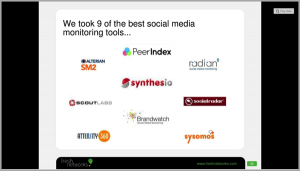Is it worth risking reputation to reach a large audience? Is that audience human anyway?
Do you know where your clicks are coming from? Do you know where your ad is going?
No one wants to see their product advertised on a web site pushing fake news, conspiracy theories or extremist politics. Marketers practicing brand safety should can prevent that from happening, but that practice is imperfect.
“Your brand is a valuable financial asset that can be damaged in an increasing myriad of ways,” said Kristoffer Belau, SVP Digital Media at MediaMonks, a digital production company. “However, many companies continue to undervalue their brand and, as such, often prioritize a short-term ‘performance at any cost’ strategy.”
Indeed, some companies are finding out the hard way that chasing after clicks is no way to make money. J.P. Morgan Chase cut the number of web sites it advertised on by 90% without losing any business. AirBnB slashed its marketing spend by 80% during the COVID-19 slowdown, but saw bookings rebound without restoring its ad budget. Uber won a lawsuit against a firm that generated false ad clicks and placed Uber’s ads on pornographic websites in violation of its contract.
So what is the solution? Do too little to protect the brand, and it gets tarnished by bad placement. Do too much to guarantee brand safety and fear — rightly or wrongly — missing a sales opportunity. How do you get it right?
Keyword blocking is a crude tool
A good example of brand safety backfiring revolves around COVID-19. Yes, the pandemic boosted online shopping and brought more readers to news sites. But those banner ads at The New York Times and Wall Street Journal simply showed clouds against a blue-sky background. The reason? Keyword blocking.
“Brand safety technology is so crude it harms news publications ,” said Dr. Augustine Fou, Group Chief Digital Officer of Fou Analytics, a marketing science consulting firm. Brands that don’t want to be associated with misinformation surrounding COVID-19 use that term to block ad placement. They avoid being placed on fake news sites trafficking conspiracy theories, but also lose placement on news sites that trafficking facts.
“The news is a premium ad channel.” said Neal Thurman, co-founder of the Brand Safety Institute (BSI). But despite news sites seeing record traffic, “we don’t see a corresponding bump in monetization.”
The tools are indeed blunt instruments, Thurman said. But it’s “easy to blame the tools,” he continued. “At some point, with the vast amount of digital ad inventory, it should be no problem spending time to refine the tools.”
“With more generic keywords, you may also land up in a situation with a high percentage of false positives,” said Geetanjali Sharma, lead for PR and industry partnership at AdPushup, which connects content creators with ad exchanges. “That being said, keyword blocking is here to stay”
False clicks
Another problem brands face is ad fraud — for example where a dubious web site is set up to attract online ads by using a bot to generate false clicks, on the site or on the ads. “When was the last time you ever clicked on an ad?” Fou asked. Humans don’t click on ads.
Ad fraud resists solution, for now. “It’s an incentive issue,” Fou said. “So long as advertisers are buying low cost, long tail sites…It’s hard to break that habit.” That combination of large quantities, low prices and high clicks will keep marketers addicted, he said.
The industry can set up a list of standards to combat that practice, tagging certain channels and acquiring a better sense of who is working in the ad supply chain, Thurman said. Once you know who is publishing that web page, you can certify the channel as reliable.
BSI wants to give marketers the tools and information to decide for themselves what they are comfortable with when placing ads. “The challenge for marketers is to be self-reflective,” Thurman said. “Think about what is right for your brands.”
“Ultimately, inventory bought through exchanges can operate within an allow-list that gives the highest level of restrictive control and prevents [bad placements] from occurring.” Belau said. “Brands willing to take more risk can rely on tools within their Ad Server or DSP that categorize and evaluate content for brand safety within some configurable thresholds.”
“Keyword blocks and a block-list are a workable first line of defense to protect your brand from unsuitable content.” Belau continued, but this method is like playing whack-a-mole, as the method requires weekly, or daily, manual update. “Anything short of an allow-list won’t be completely error proof, but an advertiser looking to balance reach and brand safety will likely find this method to be their best option.”
“There is no straightforward way of avoiding invalid data,” said Sharma said.“There is no one size fits rule, but it’s safe to say that every website has some bot traffic, single digit percentage figures, and there are others, although a minority, that have more bot traffic than real users.” Sharma said. Analysts can look at traffic characteristics, visitor behavior and history to sort out human clicks from fake ones.
Automate, but humanize
“Good guy detection technology can’t keep up with bad guy technology,” Fou said. Rather than wasting time in a never-ending tech arms race, Fou offered a human solution: know who you are dealing with.
Marketers can also take the direct route straight to publishers, Thurman added. “Even if you are paying a higher price, you know the ad will be shown to a human.”
Chasing after cost, reach and volume has implications for the brand, Thurman said. Is it better to secure 100 million impressions, knowing the ads went to real, reliable sites? Or do you go for 500 million impressions and take some risks?
“I’ve seen brands that are unwilling to advertise on certain channels at all for fear that they may end up in a risky environment.” Belau said. “Typically these brands don’t understand the tools available to them and are operating based on assumptions that they pick up in (often) alarmist articles.” By being too cautions, however, they “severely limit their first-mover advantage on major new publishers”, losing opportunities to reach new audiences.
“There’s also an inherent conflict of interest that nobody likes to talk about. Some forms of traffic (including bots) or placements might be cheap, so they’re great for your ROI and budgeting targets, but they could be terrible for your brand.” Sharma said. “Resisting this temptation pays its dividends in the long run” she said. “[B]ots never increased anybody’s conversions.”
The post Balancing risk and reach: The brand safety dilemma appeared first on MarTech.
MarTech(48)
Report Post




